I was on the seventh day of my road trip. After days of driving and camping—interspersed by a stay in Flagstaff with my friend Joyce—I had finally arrived at Chimney Rock, Colorado, the site of my upcoming novel, Spiral.
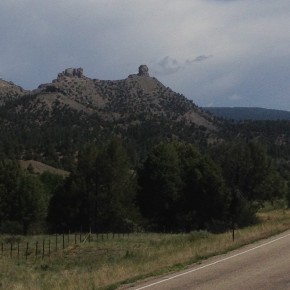
I had been working on Spiral, a prequel to Sundagger.net, for five years now and I just had to go see for myself. I had to take the same pilgrimage my characters Willow and her son, Little Hawk, take after they flee their home in Chaco Canyon, New Mexico, and set out for Chimney Rock, the furthest outlier of Chaco culture.
Driving from California on Highway 40 to Flagstaff and from there to New Mexico, I was intent on first spending a few nights at Chaco Canyon World Heritage Site where Spiral begins.
The Pre-Puebloans (otherwise known as the Anasazi, a name given to them by the Navajo, meaning “enemy ancestors”) likely came the same way, from the South.
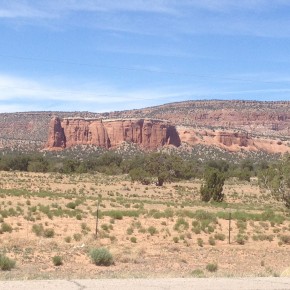
Like me, these ancient migrants would have passed by the same red rock mesas. They too would be inspired, awed, by the deep color of the high desert, the vast vistas and endless sky.
Maybe they too were anticipating a great spectacle–those ceremonies in honor of solstices and equinoxes held in the Great Houses of Chaco Canyon.
Bumping along on an unpaved dirt “washboard” road, I slowly drove through the Navajo Reservation, stopping my car in front of the only sign for 23 miles:
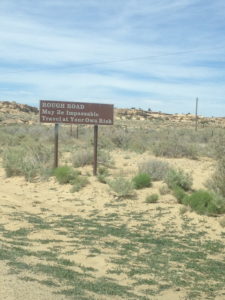
ROUGH ROAD
May be Impassable
Travel at Your Own Risk
The ancient people would have experienced rough travel without cars, wagons, wheels, horses or any other means of transportation.
A thousand years ago, this same road would likely have been full of people migrating to and from Chaco to witness the sun’s return or thrill at the lunar alignment.
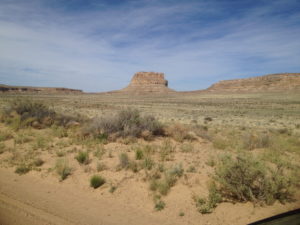
What a surprise when I turned a rocky bend and saw Fajada Butte. How close and massive it seemed from the dirt road, like a cathedral carved from sandstone.
I’d been to Chaco Canyon two times before but never approached it from the South.
I felt a strange kinship with this great rock.
At Gallo Campground in Chaco, the wind blew my tent away before I even got it secured in the ground. With the help of the campground host (from Vallejo, Ca!), I tied it to heavy metal rings. I slept that night surrounded by mesa walls, greasewood and blowing sage.
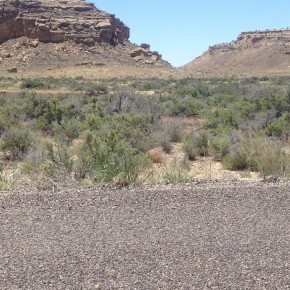
The Pre-Puebloans would have come through the South Gap into the Canyon. On the far side of the gap are more than 50 pit houses. Are they “motels” the migrants camped in while at Chaco?
Across Chaco Wash is Pueblo Bonito, the grandest of the Great Houses, where I stood while taking this photo. Debbie, the interpretive ranger who took me on a tour of Pueblo Bonito, said the arriving visitors likely might have been thrilled by the noisy celebration, the singing in many languages, dancing and music from flutes, conch shells, rattles, foot drums and more.
So many people to see the show! Was it like our rock concerts? Disneyland ? Or like High Mass at St Patrick’s Cathedral? Who knows? The only evidence are ruins and potsherds. There’s so much mystery here.
Leaving Chaco Canyon reluctantly (and missing the Full Moon ceremony), I drove to Navajo Lake where I camped a few days and then headed northeast over the Colorado border to Chimney Rock.
And now, finally, I’ve arrived. Even from so far away on the road, I am repelled first sighting the mountain. It’s chilling just seeing bulbous Companion Rock and high narrow Chimney Rock on a dark mountain of chert and lava rock. I’m amazed at how close my feelings are to the atmosphere of terror pervading Spiral that Willow is so desperate to flee.
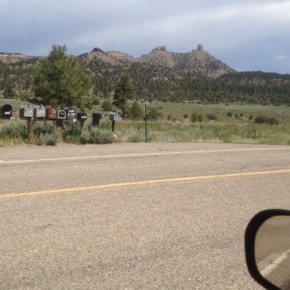
Still, looking out of my car window, I take comfort in all the mailboxes along the road, proof that ordinary people live beneath this mountain that appears so isolating and ominous seen from afar.
After setting up my tent at Ute Campground, I drive to the park entrance and learn I’m not even permitted to go up Chimney Rock alone. So instead I and five other tourists take a fascinating guided tour with Wayne, an interpretive guide and volunteer.
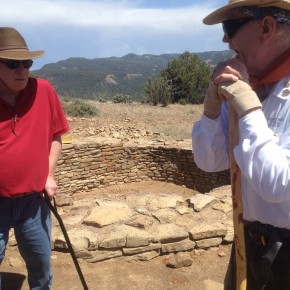
Today Chimney Rock is the powerful landmark and spiritual center for the Pueblo People–the Taos, Acoma, Zuni, Hopi, Tewa and more.
The two towers signify the Twin War Gods of the Taos Pueblo who slay monsters to help their People. The war gods are also revered by the Navajo who know them as Monster Slayer and Born-for-Water.
War Gods? Yes, of course!
After my climb to the top, I understand why.
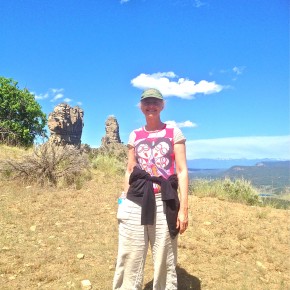

Aduni Luckett says:
Just wonderful. I can see what you see and feel what you feel. What an adventure.
Cathleen Caffrey says:
Sounds like a fabulous trip. Looking forward to Spiral.
Cathleen
Rose says:
I’m so happy that you were able to have this amazing trip and experience! You are courageous my friend!
margaret says:
Thank you, Rose. I didn’t have the courage until I took the trip!
Geoff Fox says:
Vivid description, wonderfully suggestive of a remote past. Thanks.
David Z says:
It’s great to read your story about the research for the novel and see the pics of the places. Sounds like quite an adventure. Great video and music too. Hope your new novel does well.
Margaret C. Murray says:
Dear David Z, I’m responding to your comment of 4 years ago! Thank you! My two novels on the ancient Anasazi culture of the Southwest were challenging and wonderful to research and write. I am even more committed to promoting Sundagger.net and Spiral since President Trump and his cronies are attempting to drill and frack the Anasazi land of archeological treasures and great beauty, Bears Ears and Grand Staircase Escalante National Parks.